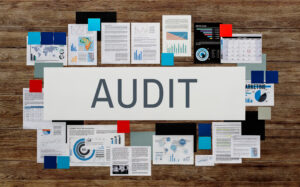Leadership’s Role in ISO 9001:2015 Implementation
Course Name: ISO 9001 Transition to 2015
SEO Keyword: ISO 9001 Transition to 2015
Introduction
ISO 9001:2015 places a strong emphasis on leadership, recognizing the critical role of top management in driving quality objectives and integrating the quality management system (QMS) into the organization’s strategic direction. Leadership commitment is fundamental to achieving compliance, fostering a culture of quality, and ensuring the long-term success of the QMS. This article explores the responsibilities of leadership under ISO 9001:2015 and practical strategies for fulfilling these roles effectively.
Table of Contents
- The Importance of Leadership in ISO 9001:2015
- Key Responsibilities of Leadership
- Strategies for Leadership Engagement
- Challenges Leaders Face
- Conclusion
- Frequently Asked Questions
The Importance of Leadership in ISO 9001:2015
The 2015 revision of ISO 9001 underscores the role of leadership in ensuring the effectiveness and integration of the QMS. Key reasons for this focus include:
- Alignment with Strategy: Leadership ensures that quality objectives align with the organization’s strategic goals and operational plans.
- Culture of Quality: Leaders play a pivotal role in fostering a culture that prioritizes quality and continuous improvement.
- Resource Allocation: Effective leadership ensures the provision of necessary resources, such as skilled personnel, tools, and training, to support the QMS.
Key Responsibilities of Leadership
ISO 9001:2015 assigns specific responsibilities to top management to enhance the QMS’s effectiveness. These include:
- Defining Organizational Direction: Establishing a clear vision for the QMS and ensuring its alignment with the organization’s mission and strategic objectives.
- Promoting Customer Focus: Ensuring that customer requirements are understood, met, and integrated into quality objectives and processes.
- Risk and Opportunity Management: Incorporating risk-based thinking into decision-making to identify potential challenges and opportunities.
- Monitoring and Evaluation: Reviewing QMS performance metrics and audit findings to identify areas for improvement.
- Communicating Quality Values: Demonstrating commitment to quality by actively promoting its importance throughout the organization.
Strategies for Leadership Engagement
To fulfill their responsibilities under ISO 9001:2015, leaders should adopt the following strategies:
- Lead by Example: Actively participate in quality initiatives, such as audits and management reviews, to demonstrate a commitment to the QMS.
- Empower Employees: Delegate responsibilities and involve employees in decision-making processes to foster a sense of ownership and accountability.
- Invest in Training: Provide ongoing training to ensure employees understand the QMS and their roles within it.
- Foster Open Communication: Create channels for feedback and collaboration to address challenges and improve processes.
- Align Quality with Business Goals: Ensure that quality objectives are integrated into the organization’s broader strategic planning and operational activities.
Challenges Leaders Face
Despite their critical role, leaders may encounter challenges in implementing ISO 9001:2015. Common obstacles include:
- Resistance to Change: Employees and managers may resist new practices or perceive the QMS as an additional burden.
- Balancing Priorities: Competing demands and limited resources can hinder effective QMS implementation.
- Lack of Expertise: Leaders may require additional training to fully understand ISO 9001:2015 requirements and their implications.
Conclusion
Leadership is a cornerstone of ISO 9001:2015, shaping the QMS’s effectiveness and its alignment with organizational goals. By embracing their responsibilities and adopting proactive strategies, leaders can foster a culture of quality, ensure compliance, and achieve sustainable success. Effective leadership not only enhances operational efficiency but also strengthens customer trust and competitive positioning.
Frequently Asked Questions
- How does ISO 9001:2015 define leadership?
ISO 9001:2015 defines leadership as the active involvement of top management in setting and achieving quality objectives, fostering a quality culture, and aligning the QMS with business strategy. - What is the role of leadership in risk-based thinking?
Leadership ensures that risk-based thinking is integrated into all levels of the organization, guiding decision-making and resource allocation to mitigate risks and seize opportunities.
Contact Us for More Information
For further details about the ISO 9001 Transition to 2015 certification and training, visit our ISO 9001 Transition to 2015 page, our ISO 9001 Transition Consultants page, or register for the ISO 9001 Transition to 2015 course on our website. You can also contact us for more information.



